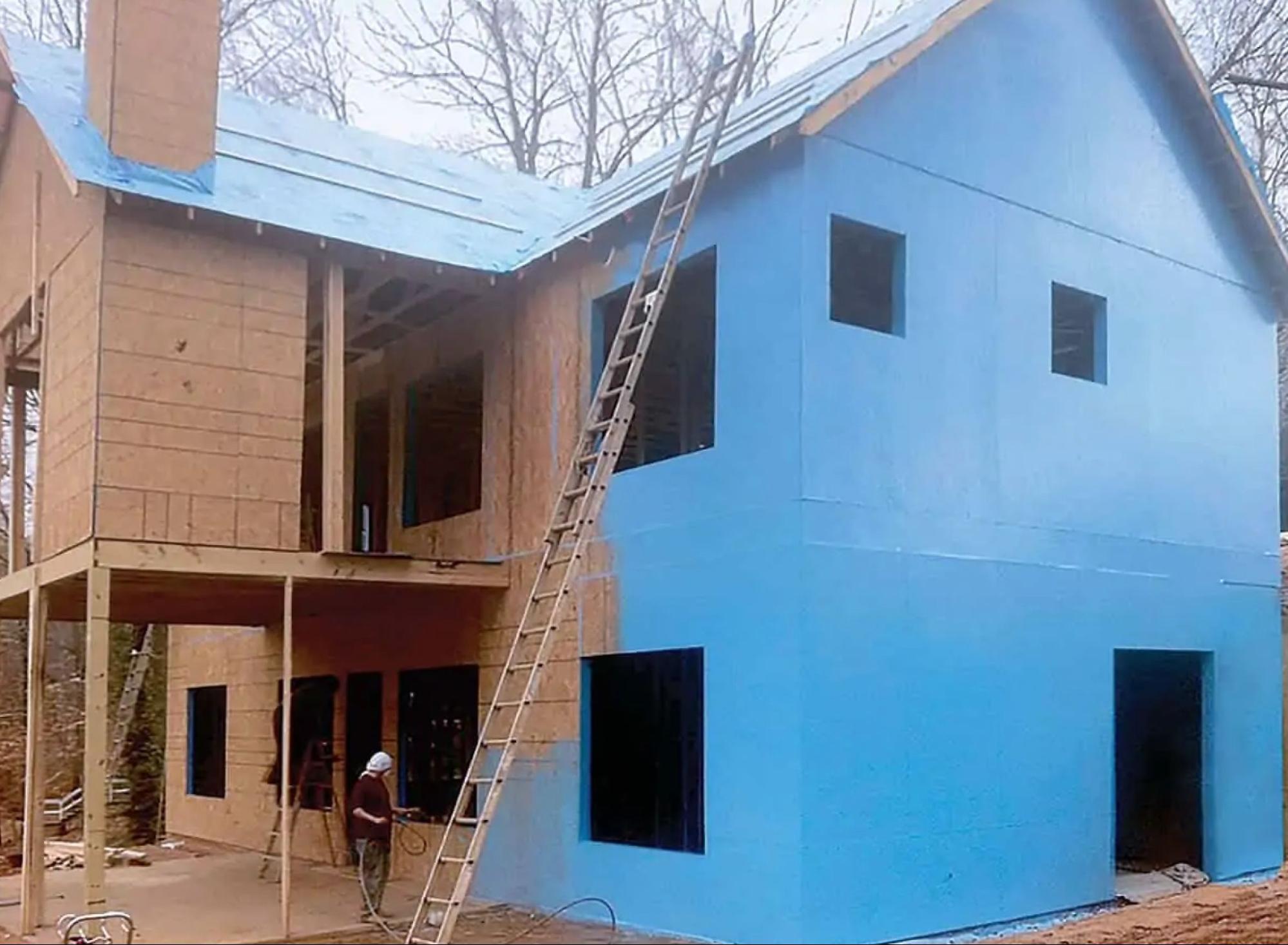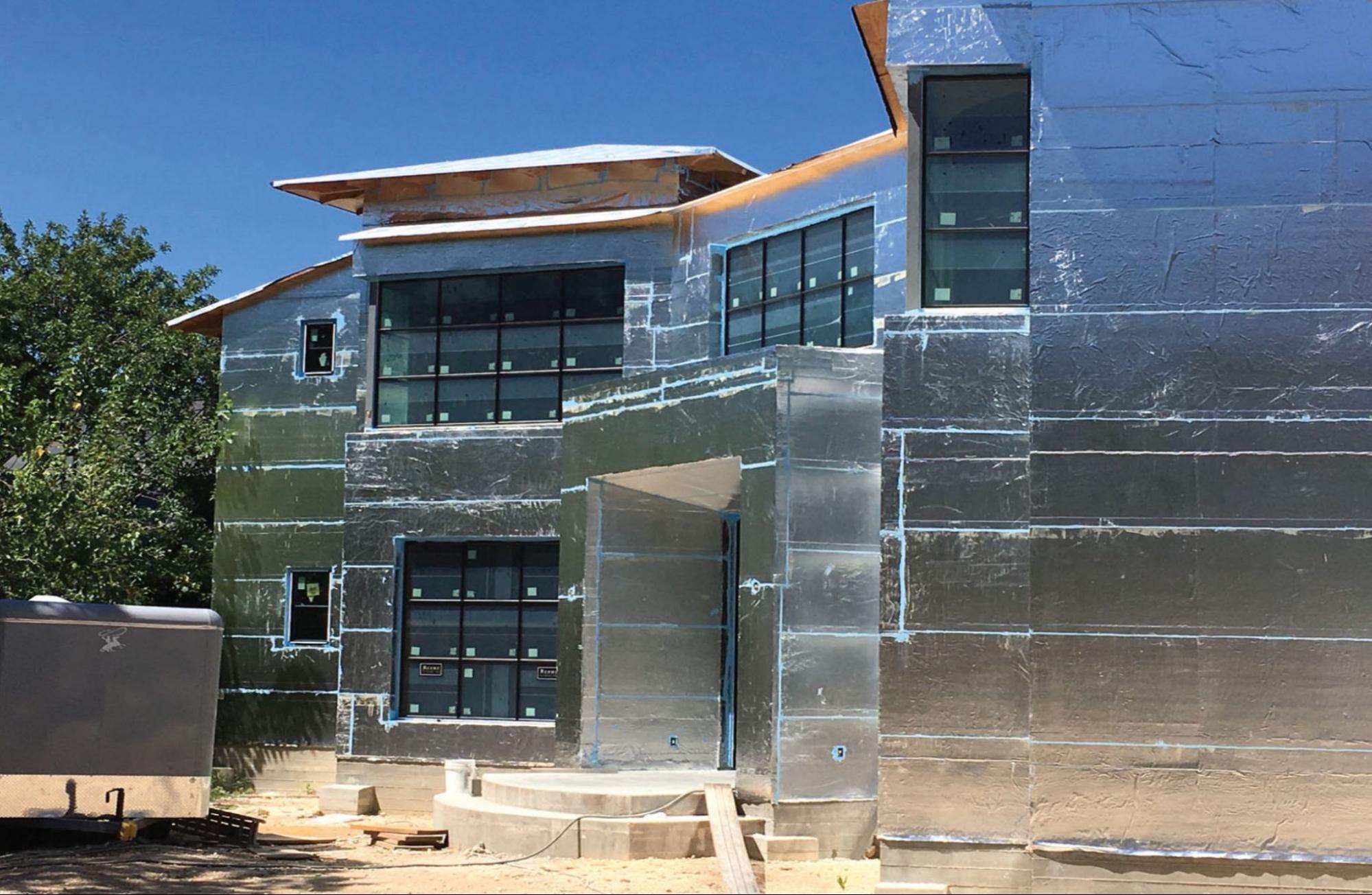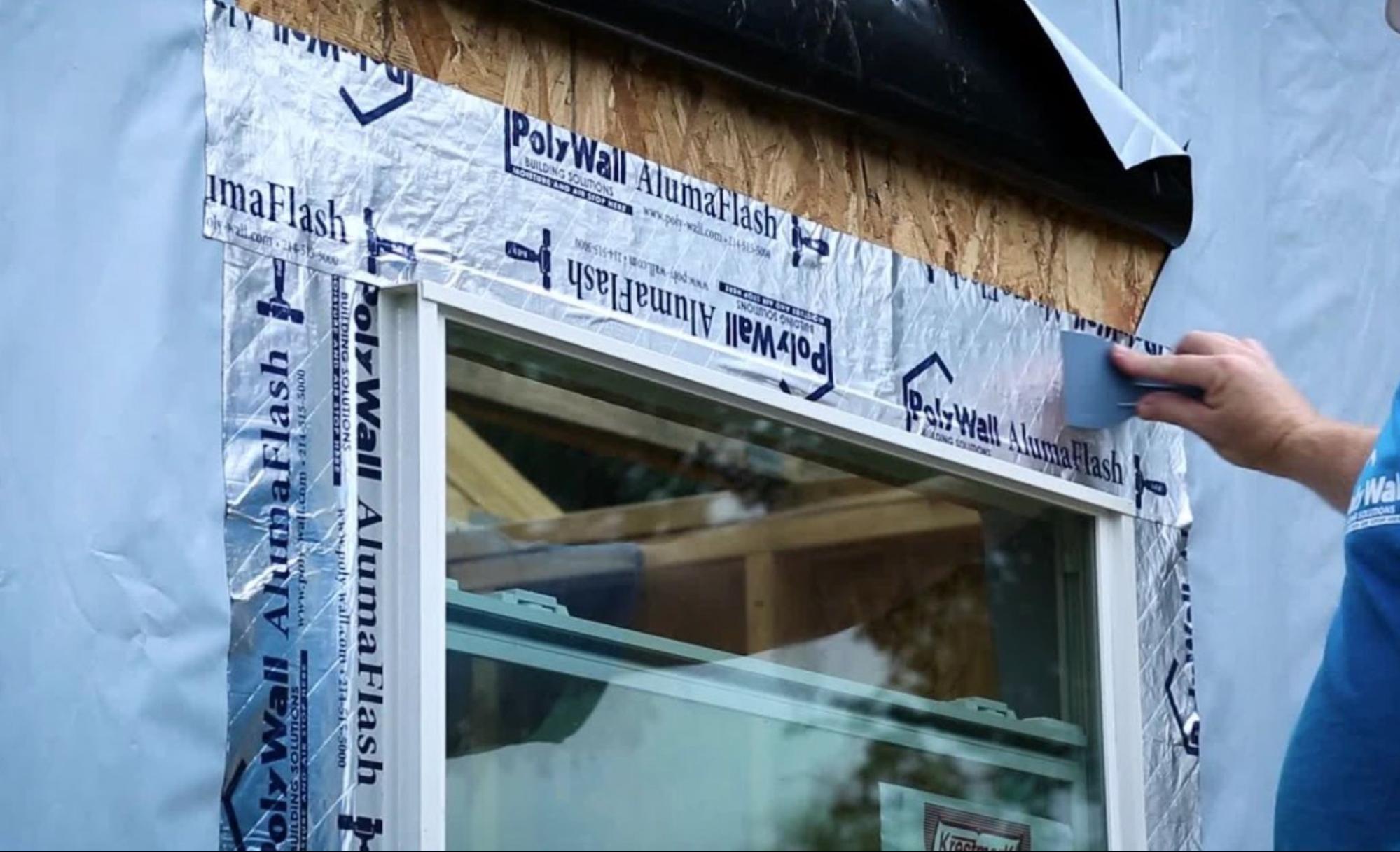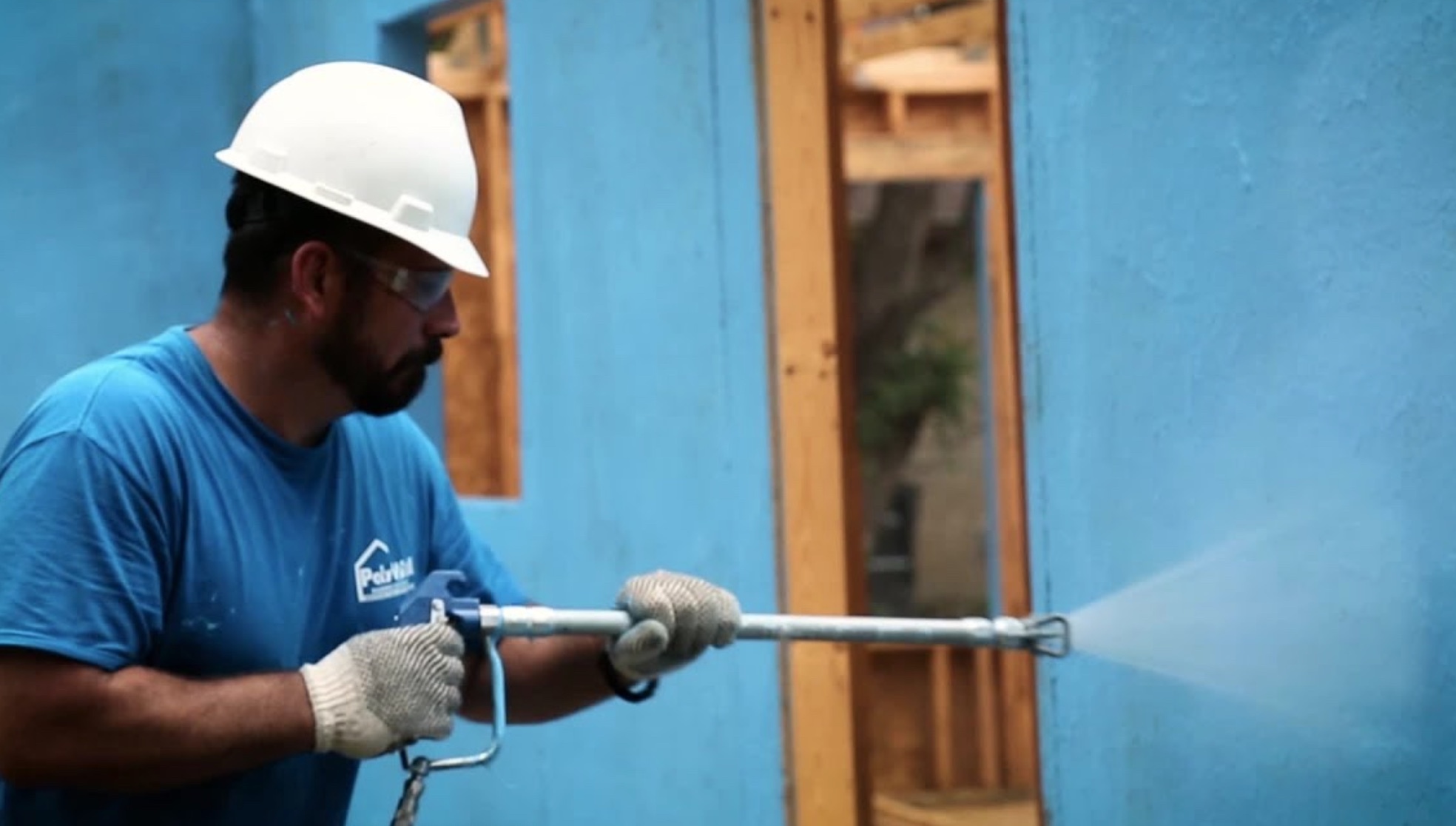High-performing, energy-efficient homes require a tight building envelope that prevents air (and moisture) from infiltrating the wall system. Air infiltration into a house can lead to significant energy loss. It will also cause condensation (moisture) to collect in the walls, resulting in structurally damaging and unhealthy mold and rot. The International Residential Code (IRC) requires weather-resistant barriers for most homes to prevent air- and moisture infiltration.
Most builders, architects, and engineers agree on the importance of an air barrier, however selecting the optimal barrier for the project can challenge even the most experienced building professional. Specifically, understanding the difference between a permeable air barrier or an impermeable air barrier for residential construction design will help you achieve code compliance, maximize airtightness, and preserve the integrity and health of the home.

Impermeable vs. Permeable Air Barrier
Choosing between an impermeable and permeable air barrier depends on codes, climate zone, building occupancy, interior conditions, and material composition. In addition, some situations (like stucco, EIFS, and precast) may not require traditional fluid-applied or self-adhered air barriers.
Changes in the 2021 IRC Vapor Retarder Codes
The 2021 IRC (R702.7) includes some significant advancements to vapor retarder provisions. Specifically, it aims to properly coordinate, in a straightforward manner, energy and building code-compliant cavity and continuous insulation (CI) materials with water vapor retarders. The new codes also recognize the use of smart water vapor retarders.
Vapor Retarder Classification
The IRC classifies vapor retarder materials according to Table R702.7(1), requiring its placement on the interior side of framed walls of the vapor retarder class indicated in Table R702.7(2) and compliant with Table R702.7(3) or Table R702.7(4). The climate zone determines the permissible Class of the vapor retarder.
Exception: In climate zones 1, 2, and 3, basement walls, below-grade walls, and walls made of moisture or cold-resistant materials do not require a vapor retarder.
Vapor Retarder Classes and Options (R702(1) and R702(2)
The 2021 IRC defines vapor retarder classes, specifying their use in different climate zones: Class I, II, and III.
Class I - Very Low Permeability Vapor Retarders
Class I vapor retarders (non-permeable barrier) have a vapor permeance of 0.1 perm or less. Class I vapor retarders will trap moisture migrating from the outdoors. The IRC permits Class I vapor retarders in zones Marine 4, 5, 6, 7, 8.
Exceptions:
All climate zones permit the use of Class I vapor retarders on the inside of framed walls with vapor permeance greater than 1 perm when measured by the ASTM E96 water method (Procedure B).
Class I vapor retarders on interior framed walls require an approved design.

Class II Low Permeability Vapor Retarders
Class II vapor retarders (non-permeable barrier) have a vapor permeance of greater than 0.1 but no more than 1.0, limiting outward vapor diffusion during heating, allowing inward drying during cooling. The IRC permits Class II vapor retards in zones 3, 4, 5, 6, 7, and 8.
Exceptions:
All climate zones permit the use of Class II vapor retarders on the inside of framed walls with vapor permeance greater than 1 perm when measured by the ASTM E96 water method (Procedure B).
Class II vapor retarders with a perm greater than 1, combined with foam plastic insulating sheathing installed as continuous insulation on the framed wall’s exterior side, must comply with Table R702.7(4).
Class III Medium Permeability Vapor Retarders
Class III vapor retarders (permeable barrier) have a vapor permeance of more than 1.0 but no greater than 10, limiting outward vapor diffusion during heating and allowing inward drying during cooling. Class III vapor retarders go on the interior side of the wall in climate zones under the conditions outlined in Table 702.7 (3) 2021 IRC.
Smart Vapor Retarders
Smart vapor retarder products provide increasing perm ratings as the relative humidity goes up from 1 perm or less at normal conditions (Class II) up to 35+ perms (vapor permeable).
When to Use Class I and II Non-Permeable Air Barriers
Hot Climate Zones 1, 2, and 3A
For hot and humid regions, where air flows from the inside to the outside year-round, an impermeable air barrier will most effectively block moisture from entering the wall cavity.
Please watch this video for more on using non-permeable air barriers in hot, humid climates.
When to use a Class III Permeable Air Barrier
Cold Climate Zones 6, 7, and 8
In cold, frigid regions (climate zones 6, 7, and 8), dramatic temperature differences between the warm inside of homes and the colder outside creates an intense vapor drive from the inside to the outside. Applying a permeable air barrier on the outer side of the exterior insulation enables the vapor from the inside of the building to diffuse out.
In addition, placing the vapor retarder between the inside space and the insulation layer further helps manage the amount of vapor passing into the wall, minimizing the chances for condensation within the wall system.
Mixed Climate Zones 4 and 5
Regions with less extreme weather, like Baltimore, still experience high relative humidity. Installing a permeable air barrier outside the exterior insulation layer with no vapor retarder inboard allows vapor to travel through the wall and permits diffusion. This design allows condensation to escape to the inside and the outside of the wall.
Poly Wall® Air Barriers Products for All Climate Zones
Poly Wall® makes air barrier products for all climate zones, from hot and humid to cold and frigid. Poly Wall® Aluma Flash Plus's non-permeable air barrier provides a superior solution for homeowners in hot and humid regions. Poly Wall® also makes permeable Blue Barrier™ Liquid Wrap 2300 for application over surfaces and substrates like plywood, OSB, and exterior gypsum for cold- and mixed-climate areas.
Poly Wall® Aluma Flash™ Plus
Poly Wall® is the ideal solution to designing an air barrier system in hot and humid climate zones. A third-party ten-year study compared the amount of moisture at the outer layer of the OSB found on impermeable Aluma Flash™ Plus and permeable sheet house wrap. The results concluded that Aluma Flash™ Plus performed comparably and outperformed the permeable sheet house wrap in some cases.
Durable Poly Wall® Aluma Flash™ Plus provides robust waterproofing, sunlight and chemical resistance, and fast and easy installation. The waterproofing sheet membrane is made of 40-mil rubberized asphalt, laminated to two layers of high-strength polyethylene film, and topped with a protective layer of aluminum.

Poly Wall® Blue Barrier™ Liquid Wrap 2300
Environmentally friendly, Blue Barrier™ Permeable Liquid Wrap 230 provides a thin mil, seamless substrate coating, applied by hand or power rolling or with an approved airless sprayer. It produces a fully adhered, protected air and moisture building envelope membrane developed utilizing the latest in Silyl Terminated Polyether Technology (STEP).

When to Use Permeable vs.. Non-Permeable Air Barriers
Choosing between a permeable and non-permeable air barrier depends on your climate zones and building codes. An impermeable air barrier in hot and humid regions will often offer the best protection against moisture accumulation in the wall systems. However, a permeable air barrier may best combat moisture inflation in extreme cold and mixed climates. In both cases, Poly Wall® building solutions can help you select the best options for your home.
Don't hesitate to contact Poly Wall® professionals today for more tips and advice on using permeable vs. non-permeable air barriers.
